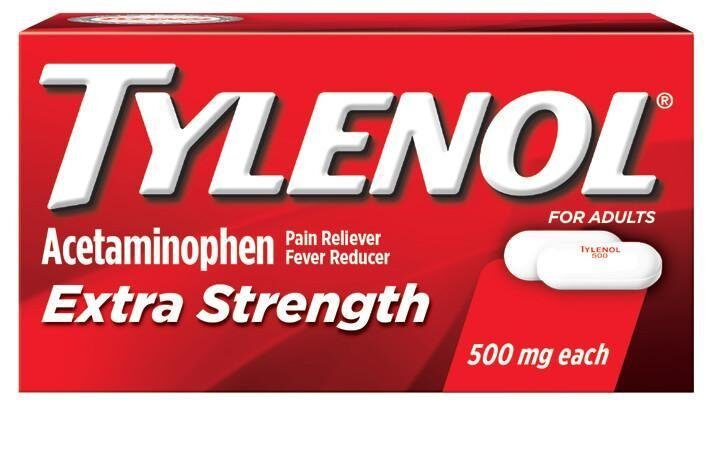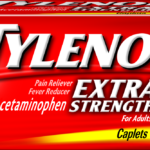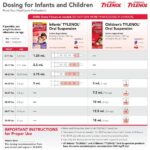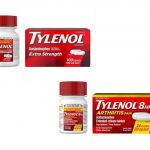Acetaminophen (Tylenol) Uses, Dosage, Risk, Side Effects

Acetaminophen commonly known as Tylenol, is the most commonly taken analgesic worldwide and is recommended as first-line therapy in pain conditions by the World Health Organization (WHO). It is also used for its antipyretic effects, helping to reduce fever. This drug was initially approved by the U.S. FDA in 1951 and is available in a variety of forms including syrup form, regular tablets, effervescent tablets, injection, suppository, and other forms.
Acetaminophen is often found combined with other drugs in more than 600 over the counter (OTC) allergy medications, cold medications, sleep medications, pain relievers, and other products. Confusion about dosing of this drug may be caused by the availability of different formulas, strengths, and dosage instructions for children of different ages. Due to the possibility of fatal overdose and liver failure associated with the incorrect use of acetaminophen, it is important to follow current and available national and manufacturer dosing guidelines while this drug is taken or prescribed.
How Does Acetaminophen Works?
You can use acetaminophen to relieve mild or moderate pain. This is usually pain from colds, sore throats, headaches, body or muscle aches, menstrual cramps, arthritis, or toothaches. You can also use it to reduce fever.
It’s not fully known how acetaminophen works. It doesn’t reduce swelling or inflammation. Instead, it’s thought that it blocks the release of certain chemicals in your brain that signal the sensation of pain.
How should this medicine be used?
Acetaminophen comes as a tablet, chewable tablet, capsule, suspension or solution (liquid), extended-release (long-acting) tablet, and orally disintegrating tablet (tablet that dissolves quickly in the mouth), to take by mouth, with or without food. Acetaminophen is available without a prescription, but your doctor may prescribe acetaminophen to treat certain conditions. Follow the directions on the package or prescription label carefully, and ask your doctor or pharmacist to explain any part you do not understand.
If you are giving acetaminophen to your child, read the package label carefully to make sure that it is the right product for the age of the child. Do not give children acetaminophen products that are made for adults. Some products for adults and older children may contain too much acetaminophen for a younger child. Check the package label to find out how much medication the child needs. If you know how much your child weighs, give the dose that matches that weight on the chart. If you don’t know your child’s weight, give the dose that matches your child’s age. Ask your child’s doctor if you don’t know how much medication to give your child.
Acetaminophen comes in combination with other medications to treat cough and cold symptoms. Ask your doctor or pharmacist for advice on which product is best for your symptoms. Check nonprescription cough and cold product labels carefully before using two or more products at the same time. These products may contain the same active ingredient(s) and taking them together could cause you to receive an overdose. This is especially important if you will be giving cough and cold medications to a child.
Swallow the extended-release tablets whole; do not split, chew, crush, or dissolve them.
Place the orally disintegrating tablet (‘Meltaways’) in your mouth and allow to dissolve or chew it before swallowing.
Shake the suspension well before each use to mix the medication evenly. Always use the measuring cup or syringe provided by the manufacturer to measure each dose of the solution or suspension. Do not switch dosing devices between different products; always use the device that comes in the product packaging.
Stop taking acetaminophen and call your doctor if your symptoms get worse, you develop new or unexpected symptoms, including redness or swelling, your pain lasts for more than 10 days, or your fever gets worse or lasts more than 3 days. Also stop giving acetaminophen to your child and call your child’s doctor if your child develops new symptoms, including redness or swelling, or your child’s pain lasts for longer than 5 days, or fever get worse or lasts longer than 3 days.
Do not give acetaminophen to a child who has a sore throat that is severe or does not go away, or that occurs along with fever, headache, rash, nausea, or vomiting. Call the child’s doctor right away, because these symptoms may be signs of a more serious condition.
What side effects can this medication cause?
Acetaminophen may cause side effects. Some side effects can be serious. If you experience any of the following symptoms, stop taking acetaminophen and call your doctor immediately or get emergency medical attention:
- red, peeling or blistering skin
- rash
- hives
- itching
- swelling of the face, throat, tongue, lips, eyes, hands, feet, ankles, or lower legs
- hoarseness
- difficulty breathing or swallowing
Acetaminophen may cause other side effects. Call your doctor if you have any unusual problems while you are taking this medication.
Overdose
If someone takes more than the recommended dose of acetaminophen, get medical help immediately, even if the person does not have any symptoms. Symptoms of overdose may include the following:
- nausea
- vomiting
- loss of appetite
- sweating
- extreme tiredness
- unusual bleeding or bruising
- pain in the upper right part of the stomach
- yellowing of the skin or eyes
- flu-like symptoms
Acetaminophen Safety Information
Taking too much acetaminophen can cause liver damage, sometimes serious enough to require liver transplantation or cause death. You might accidentally take too much acetaminophen if you do not follow the directions on the prescription or package label carefully, or if you take more than one product that contains acetaminophen.
To be sure that you take acetaminophen safely, you should
- not take more than one product that contains acetaminophen at a time. Read the labels of all the prescription and nonprescription medications you are taking to see if they contain acetaminophen. Be aware that abbreviations such as APAP, AC, Acetaminophen, Acetaminoph, Acetaminop, Acetamin, or Acetam. may be written on the label in place of the word acetaminophen. Ask your doctor or pharmacist if you don’t know if a medication that you are taking contains acetaminophen.
- take acetaminophen exactly as directed on the prescription or package label. Do not take more acetaminophen or take it more often than directed, even if you still have fever or pain. Ask your doctor or pharmacist if you do not know how much medication to take or how often to take your medication. Call your doctor if you still have pain or fever after taking your medication as directed.
- be aware that you should not take more than 4000 mg of acetaminophen per day. If you need to take more than one product that contains acetaminophen, it may be difficult for you to calculate the total amount of acetaminophen you are taking. Ask your doctor or pharmacist to help you.
- tell your doctor if you have or have ever had liver disease.
- not take acetaminophen if you drink three or more alcoholic drinks every day. Talk to your doctor about the safe use of alcohol while you are taking acetaminophen.
- stop taking your medication and call your doctor right away if you think you have taken too much acetaminophen, even if you feel well.
Talk to your pharmacist or doctor if you have questions about the safe use of acetaminophen or acetaminophen-containing products.





